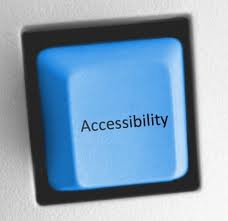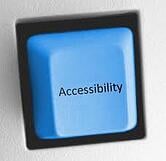Online Inclusivity: AODA Compliance

While user experience is often the focus of website design, the unique accessibility requirements of certain users are not often considered. Getting businesses to address the needs of all of their potential users is ultimately the goal of the Web Content Accessibility Guidelines (WCAG 2.0), which exist under the umbrella of the 3rd AODA Standard, the Accessibility Standard for Information and Communication.
Taking into account the needs of users with disabilities, the AODA and WCAG 2.0 provide organizations with the necessary tools to make their information accessible to all of users.
By January 1, 2014, organizations were required to:
- Provide accessible formats and communications supports as quickly as possible, and at no additional cost, when a person with a disability asks for them.
- Make feedback processes accessible by providing accessible formats and communications supports when requested.
- Make public emergency information accessible when requested.
- Make their websites and web content accessible according to the Web Content Accessibility Guidelines (WCAG) 2.0 .
Of the aforementioned requirements, the WCAG 2.0 is the most daunting as it requires organizations to be pre-emptive. However, it is important to note that it only applies to new websites, those that have been significantly refreshed (more than 50%), and any new content that is posted. Further, compliance is only required for organizations with more than 50 employees.
The WCAG 2.0 Level A requirements have been split into 4 categories.
1. Perceivable
Information should be presented to users in ways that are easy to perceive. For instance, sites should provide text alternatives for non-text content so it can be modified into other formats such as large print, and further, should be clearly distinguishable from the background. Organizations are also asked to provide alternatives for time-based media by providing audio-only and text only versions of content.
2. Operable
Users must be able to operate the interface of websites. This means making all functionality available from a keyboard; provide users with enough time to interpret content; incorporate techniques to help users navigate the site, such as limiting page numbers; and also ensure the site does not cause seizures.
3. Understandable
Information and the operation of the site should be understandable. Put another way, users must be able to understand the information from a content perspective, as well as understand the operation of the interface. To achieve this, limit the use of or define unusual words or jargon, ensure your web pages appear and operate in predictable ways, and help users avoid mistakes by hiding operational form fields.
4. Robust
In this case, robust relates to compatibility, where current and future users should be able to access content, even as technologies advance.
As the trend toward inclusivity continues, companies of all sizes should be getting into the habit of developing accessible content. Working through the WCAG Level A requirements will position you and your organization for a smoother transition to WCAG Level AA, which will be required in the coming years.
Looking for more help to make marketing work in your B2B company? Get proven tips in PROFITGUIDE’s Special Report on The Radical Sales Shift.
.png?width=2361&height=488&name=Mezzanine%20Logo_Horiz_RGB_on%20blue%20(1).png)


